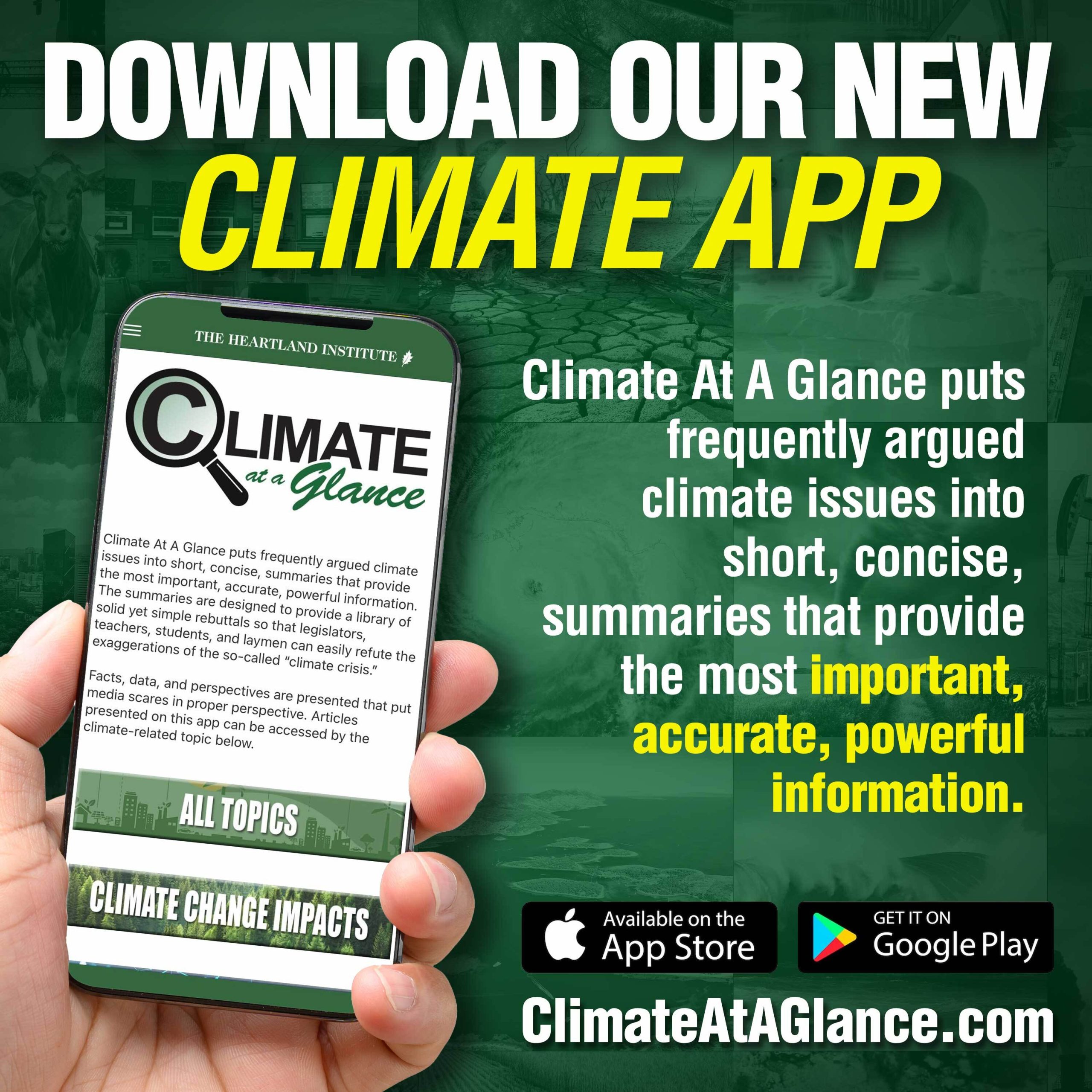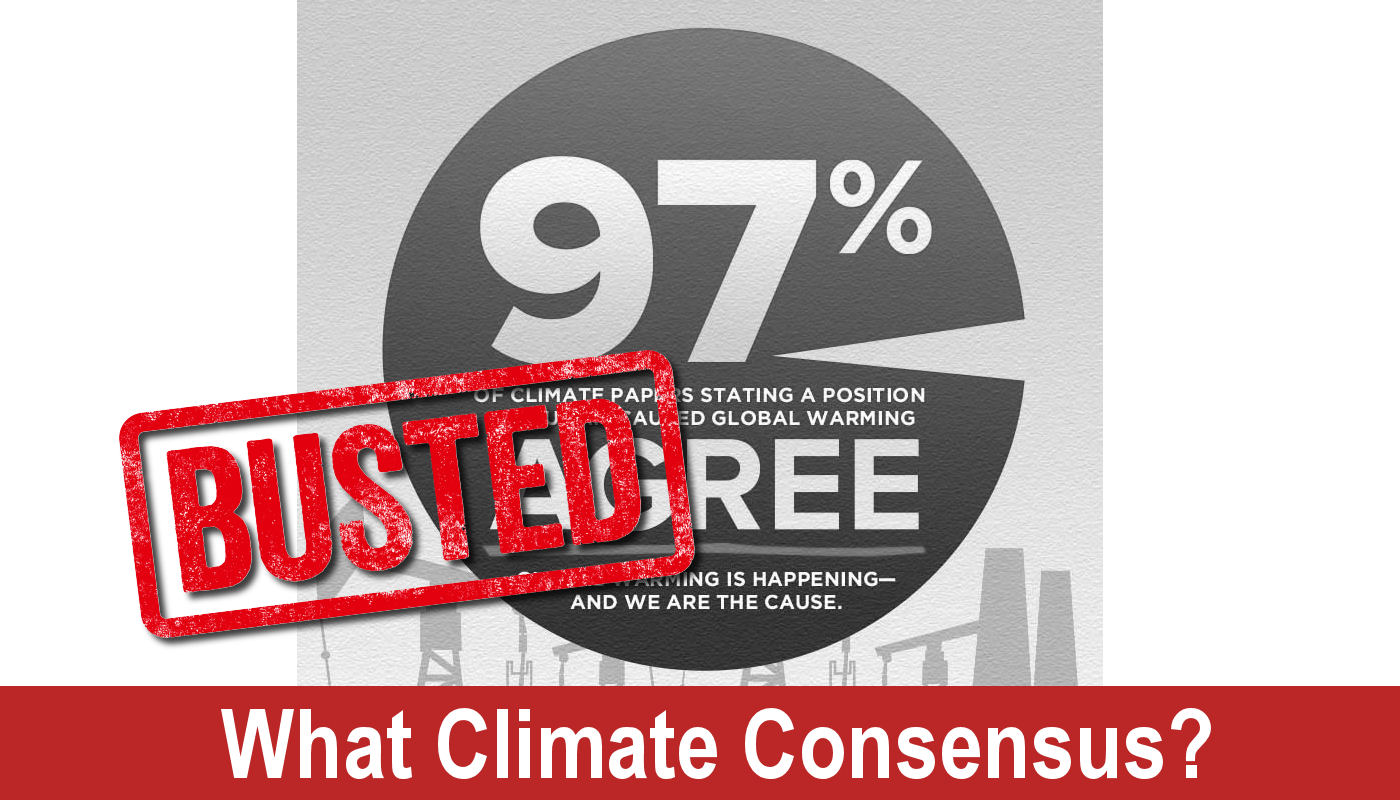In their recent article, “June is the new July: Why intense summer heat is arriving earlier,” The Washington Post (WaPo) claims that “the heat waves moving in recent days across Canada, the U.S., and northern Europe are part of a dangerous new climate pattern.” This narrative is wrong, or misleading at best. Data does not show a meaningful trend toward earlier or more intense heat waves on a global scale. Evidence suggests that much of the perceived increase in early-season heat can be attributed to the Urban Heat Island (UHI) effect and misinterpretations of regional variability, not to any alarming global shift.
“The heat waves moving in recent days across Canada, the northeastern United States and northern Europe have one thing in common: They are occurring quite early in the season,” writes WaPo, continuing, “That timing speaks to a broader trend, connected to human-caused climate change, . . the hottest 10 years on record have all come during the past decade.”
One of the most critical oversights in WaPo’s article is that it ignores the role the Urban Heat Island (UHI) effect has on recorded temperatures and trends. The UHI is well-documented phenomenon where cities record significantly higher temperatures than their rural surroundings due to concentrated infrastructure, asphalt, and human activity, biasing reported surface station temperature records and averages. As cities expand, the local thermometers used to measure temperature increasingly reflect urban heating, not global trends.
Studies have shown that UHI exaggerates apparent warming trends, especially in densely populated areas. When Toronto, London, and Paris report record-breaking early summer heat, we must ask, whether those records reflect global climate change, or are primarily artifacts of measuring temperatures in increasingly urbanized locations?
NASA’s own research acknowledges this issue, pointing out that urban areas can be several degrees warmer than surrounding rural regions. Also research published by Roy Spencer, Ph.D., demonstrates that the homogenization process used by NOAA and other agencies tends to blend urban warming into surrounding rural stations, artificially amplifying apparent warming trends. Yet, mainstream media outlets like WaPo, routinely ignore the impact of the UHI on reported temperature trends.
The article repeatedly frames early-season heat waves as evidence of a “dangerous new climate pattern.” However, anyone with a grounding in meteorology can explain weather variability has always caused summers to start earlier or later from year to year. This isn’t new; it’s normal.
Meteorological history tells us that the start of summer-like conditions have naturally fluctuated for centuries, influenced by jet stream patterns, ocean oscillations, and other large-scale global and regional atmospheric drivers. Some years, summer seems to arrive early; other years, it comes late. There is no consistent, demonstrable trend pointing to earlier global summers. The problem is that WaPo takes a handful of recent years and extrapolates a dangerous trend from what is, essentially, a noisy dataset covering a short time frame.
To further support its alarming thesis that summer heat is arriving earlier and lasting longer WaPo cites the University of Maine’s Climate Change Institute’s (CCI) claim that the Northern Hemisphere’s average temperature exceeded 21°C much earlier in recent years than during 1979 through 2000 time period. What WaPo and CCI ignore, however, are the satellite datasets, which are far less affected by UHI and offer a more reliable global measurement. Satellite records have measured significantly lower warming and smaller warming trends. The satellite data from UAH (University of Alabama in Huntsville) indicate that much of the “record heat” narrative is simply not borne out globally.
WaPo also regurgitates the U.S. Environmental Protection Agency’s (EPA) claim that heat waves have grown “longer, more frequent, and more intense over the past seven decades.” Yet, the EPA’s claims are undermined by the government’s own data. Data from the National Centers for Environmental Information show that the 1930s, particularly during the Dust Bowl years, experienced some of the most severe heat waves in U.S. history, more severe and extreme than at present.
Climate at a Glance: U.S. Heatwaves presents historical data from the National Oceanic and Atmospheric Administration (NOAA) which show that heat waves were far more severe in the 1930s than they are today. The number of days exceeding 95°F in the 1930s dwarfs anything seen in recent decades, as seen in Figure 1 below.

For example, the all-time record high temperature in North America — 134°F in Death Valley — was set in 1913, long before the industrial CO₂ rise that WaPo blames for current heat events. In fact, the heat wave frequency in the mid-20th century was significantly higher than today when looking at unadjusted, rural-only temperature records. Data show that more state heat records were set during the single decade of the 1930s (23) than all the records set or tied in the 55 years since 1970 (16), much less the six records set or tied since 2000, during the supposedly hottest two and a half decades on record.
The article inevitably brings up wildfires in Greece and early glacier melt in the Swiss Alps, as if these local events are proof of a planetary shift. Yet, as has been documented at Climate Realism, wildfires are strongly influenced by forest management practices, human ignition sources, and short-term weather patterns far more than by any modest changes in global temperature.
Similarly, glacier melt is a complex process influenced by snow accumulation, dust deposition, and even localized black carbon from vehicles and industry. The sweeping attribution to CO₂ emissions as the cause is a gross oversimplification that disregards these critical local variables.
This story is yet another example of WaPo failing to do its homework while aggressively pushing the climate alarm narrative. Instead of investigating the well-documented influence of UHI, natural weather variability, and the flaws in climate model projections, WaPo once again does its readers a disservice by defaulting to lazy reporting that assumes all heat is anthropogenic and that any deviation from an arbitrary 20th-century average is cause for panic. They’ve been called out before for this kind of sensationalist reporting here, here, and here, yet they persist, perhaps because fear sells.
As long as media outlets like The Washington Post prioritize climatic clickbait over credible science, they will continue to erode public trust. That’s the real dangerous trend here.


















